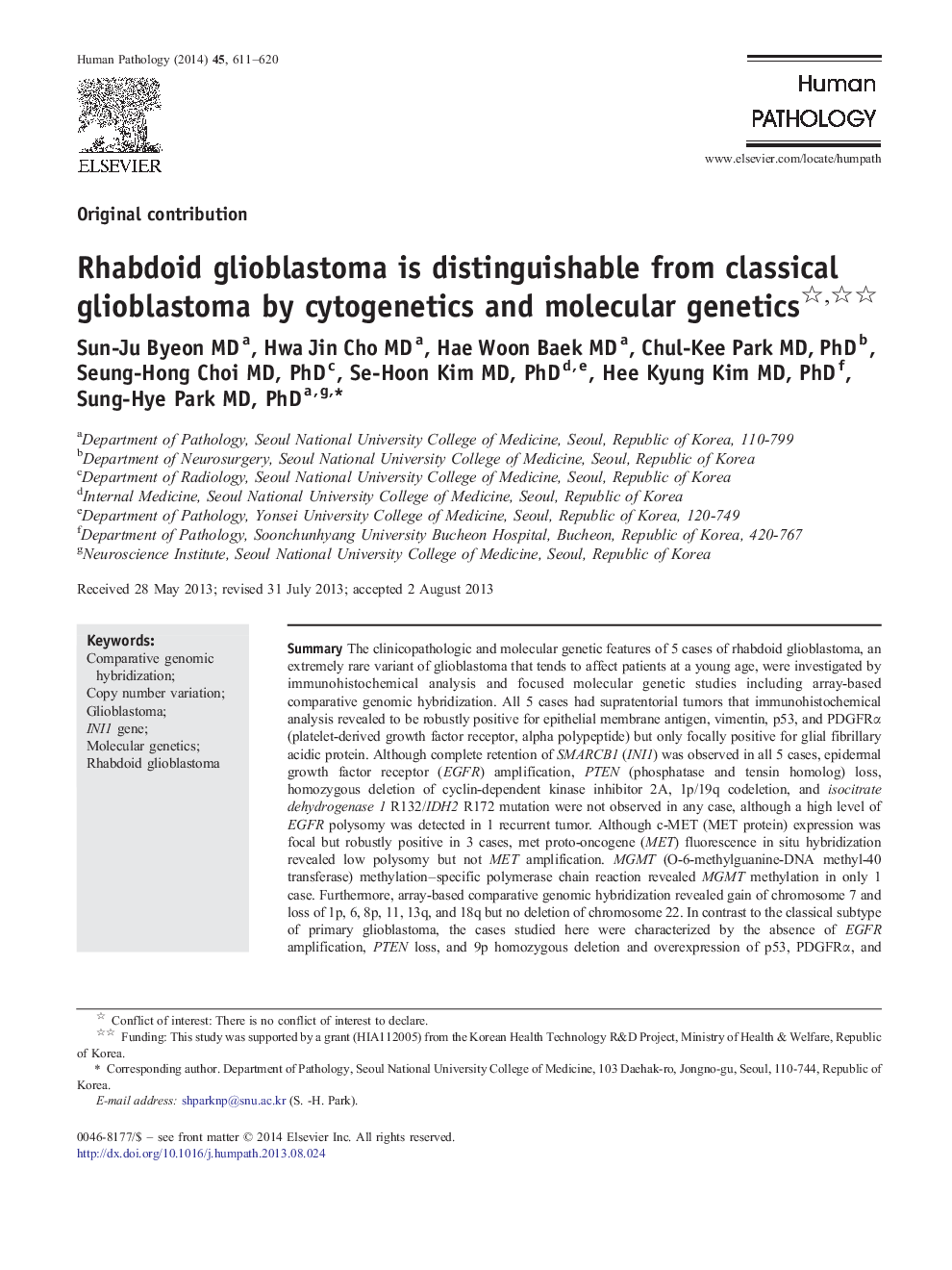| کد مقاله | کد نشریه | سال انتشار | مقاله انگلیسی | نسخه تمام متن |
|---|---|---|---|---|
| 6215954 | 1271408 | 2014 | 10 صفحه PDF | دانلود رایگان |

SummaryThe clinicopathologic and molecular genetic features of 5 cases of rhabdoid glioblastoma, an extremely rare variant of glioblastoma that tends to affect patients at a young age, were investigated by immunohistochemical analysis and focused molecular genetic studies including array-based comparative genomic hybridization. All 5 cases had supratentorial tumors that immunohistochemical analysis revealed to be robustly positive for epithelial membrane antigen, vimentin, p53, and PDGFRα (platelet-derived growth factor receptor, alpha polypeptide) but only focally positive for glial fibrillary acidic protein. Although complete retention of SMARCB1 (INI1) was observed in all 5 cases, epidermal growth factor receptor (EGFR) amplification, PTEN (phosphatase and tensin homolog) loss, homozygous deletion of cyclin-dependent kinase inhibitor 2A, 1p/19q codeletion, and isocitrate dehydrogenase 1 R132/IDH2 R172 mutation were not observed in any case, although a high level of EGFR polysomy was detected in 1 recurrent tumor. Although c-MET (MET protein) expression was focal but robustly positive in 3 cases, met proto-oncogene (MET) fluorescence in situ hybridization revealed low polysomy but not MET amplification. MGMT (O-6-methylguanine-DNA methyl-40 transferase) methylation-specific polymerase chain reaction revealed MGMT methylation in only 1 case. Furthermore, array-based comparative genomic hybridization revealed gain of chromosome 7 and loss of 1p, 6, 8p, 11, 13q, and 18q but no deletion of chromosome 22. In contrast to the classical subtype of primary glioblastoma, the cases studied here were characterized by the absence of EGFR amplification, PTEN loss, and 9p homozygous deletion and overexpression of p53, PDGFRα, and c-MET, suggesting that they can be classified as the proneural or mesenchymal subtype of glioblastoma and benefit from intensive therapy that includes temozolomide.
Journal: Human Pathology - Volume 45, Issue 3, March 2014, Pages 611-620